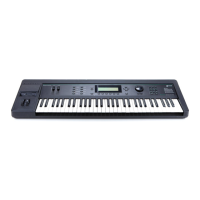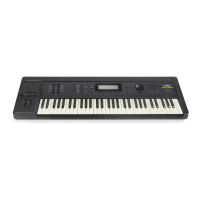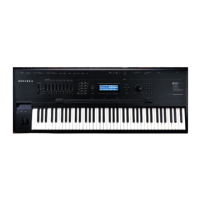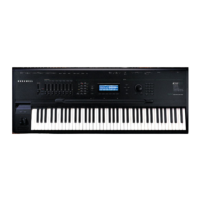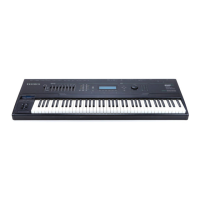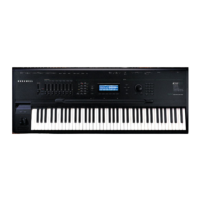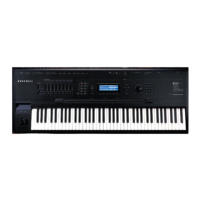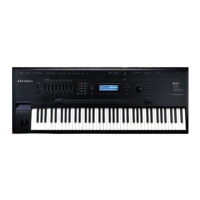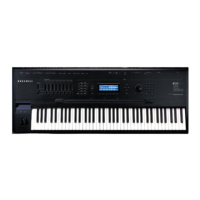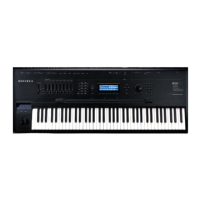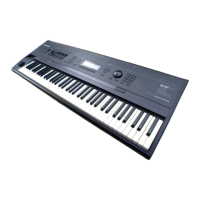1-4
System Software Versions 2 and 3
Version 2 System Software
Note Triggering
You can trigger notes with key release (key-up) instead of key attack (key-down). Just set a value
of
Rvrs
(Reverse) for the Trig parameter on the LAYER pge in the Program Editor. The initial
velocities of notes triggered this way are determined by the release velocities of the keys that
trigger them.
Extended Sample Loops
You can also play data after the sample’s loop on key-up. This is done by setting the Alt sample
pointer after the sample end pointer, then setting a relatively low value for the release parameter
on the MISC page in the Sample Editor.
Sample Loop Playback
Reversed and bidirectional sample loop playbacks are now available, using the Playback
parameter on the MISC page in the Sample Editor. This is somewhat similar to the
PlayBackMode parameter on the KEYMAP page in the Program Editor; the difference is that the
PlayBackMode parameter affects the entire current layer, while the Playback parameter affects
only the current sample.
Muting Layers in Drum Programs
In the Program Editor, when editing a “drum” program (a program with more than three
layers), the Program mode button (Mute Layer 1) will mute the currently displayed layer.
Pressing either the Setup or Quick Access mode button (Mute Layers 2 or 3) will solo the
currently displayed layer. If you move to the Keymap Editor or Sample Editor while muting or
soloing, the muting or soloing will remain in effect, even though the LEDs will not remain lit.
(This is true for normal programs, as well).
CHAN/BANK buttons
In Program mode, pressing the
CHAN/BANK
buttons will take you through the 16 MIDI
channels. This is the way they worked in Version 1 software, although in Version 1.3 system
software, these buttons were used to scroll through K2000 programs.
The V Parameter (on the MIDI-Mode XMIT Page)
This parameter acts as a global override to the Vparameter on the Setup Editor Page. When the
V parameter is off, the K2000 does not transmit initial volumes when you select a setup.
The V Parameter (on the Setup-Editor Page)
You’ll also find a V parameter on the Setup Editor page. This parameter enables you to control
the initial MIDI volume setting for each zone of the current setup. When you call up a setup in
Setup mode, the K2000 sends a MIDI volume control signal on the each of the setup’s MIDI
channels. This sets the starting volume level for each zone. Subsequent MIDI volume control
signals sent to the setup’s MIDI channels affect the volume normally.
Panic
The two right soft buttons, when pressed simultaneously, send an All Notes Off and
All Controllers Off message to the K2000 and to the MIDI Out port. This is the same effect as the
Panic
soft buttons that appear in various places.
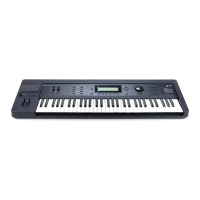
